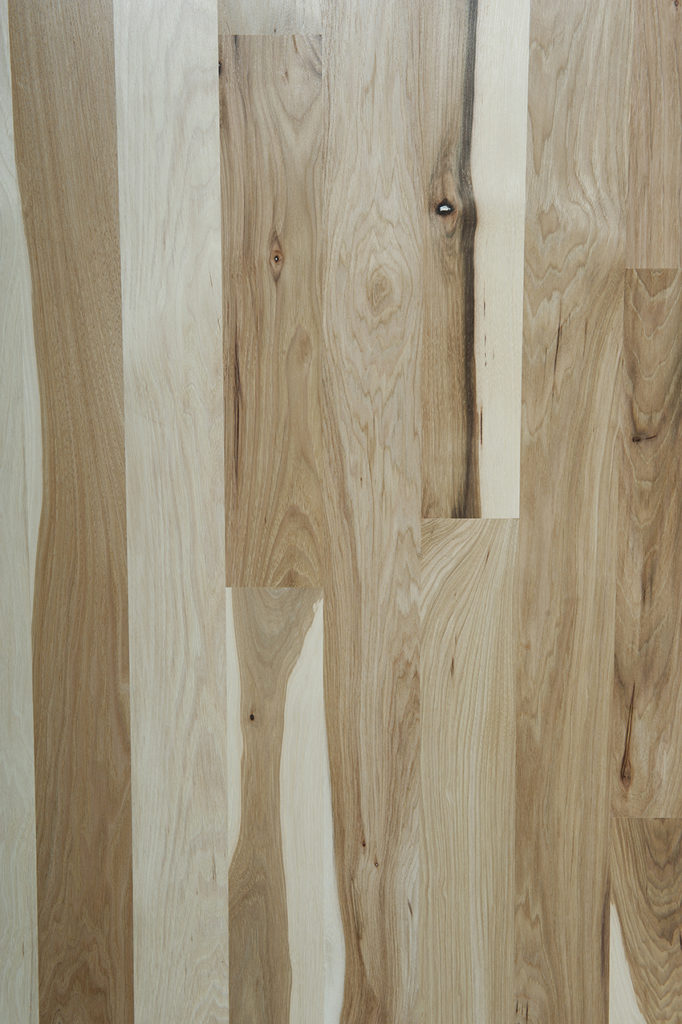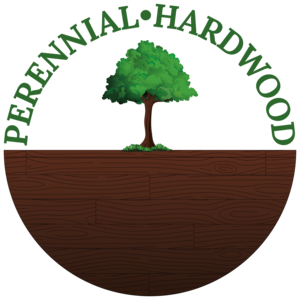No two hardwood floors are the same, there is a massive range of options when it comes to putting hardwood floors in your home. The most common hardwood floor in Northern Colorado may look very different than in a different region. Differentiation in character and species are part of what make hardwood floors so desirable and beautiful, but learning about all of your options can be a tall task. If you are looking to put hardwood floors in your Northern Colorado home, here is some information that can help educate your decision.
Not all wood is created equal when it comes to hardness. Some species are much too soft or too hard to be used for hardwood floors. The hardness of wood is rated on the Janka Hardness Scale– a score that measures the resistance of each wood species to denting. Each species is rated by measuring the amount of force in pounds (lbf) required to embed a steel beam into the wood. For a more in-depth explanation of the process, click here. The higher the score, the harder the wood, and therefore the higher its durability from denting and scratching.
Within one tree are multiple types of wood called heartwood and sapwood, each coming from different locations within the tree. Heartwood tends to be darker than sapwood from the same tree. Hardwood floors contain both types of wood and the resulting color variation creates the characteristic “wood floor” look that we all know and love. To learn more about the difference between heartwood and sapwood and what that means for your floors, click here.
Another important specification of the wood used for hardwood floors is its character grade. Individual planks coming from a particular wood species will vary significantly in color, board length, number and size of knots, and more. Hardwood flooring mills categorize similar boards and place them into different character grades. Of course, categorization criteria is not identical for every mill, though they are typically very similar. In general, grades are categorized as #2, #1, and Select. Your hardwood flooring contractor will know the specific character grades for each of their preferred mills
#2– This grade is typically characterized by colorful variation between boards, and plentiful large knots. Floors of this grade usually create a beautiful rustic look and is sometimes referred to as “dirty” due to the color variation and knots (don’t worry, this isn’t a bad thing! It is just common jargon). #2 wood is typically the less expensive option within any particular species.
#1– Boards of this grade are typically referred to as “cleaner” than #2. This means that there will be fewer and smaller knots, and less color variation between boards. The boards themselves will also tend to be longer and require less wood fill during the finishing process. This is typically the most popular grade, as it is still affordable and creates a beautiful floor in any home.
Select– This is typically the highest grade available. The average board length will be longer compared to lower grades with very little to no knots and the least possible color variation between boards. Select grade floors will look very consistent and “clean” overall and are very popular in high-end homes. It is usually the most expensive option and creates a refined hardwood floor look.
Board width is also important to consider when investing in new hardwood floors in your home. Most species are available in a large array of different lengths. Typically, thinner boards are less expensive whereas wider boards are more expensive. Additionally, width will affect the installation and maintenance processes. Wider boards may need a glue-assisted installation and/or a humidity controlled climate within the home.
Though many wood species can be used for hardwood floors, some are much more common than others. As resources and design choices change with time, older homes may have completely different hardwood floors than a new-construction home. When considering investing in hardwood floors, here is what you should know about some of the most popular options.
Red Oak (Janka=1290lbf): Red Oak hardwood floors will include white to light brown sapwood and pinkish heartwood. It is abundantly available and affordable, making it the most common flooring option. It is popular due to its durability and classic look. With Red Oak, it can be difficult (or nearly impossible) to avoid warmth and red/pink tones in the floor because of the natural color of the wood. That said, Red Oak is easy to stain and can express a multitude of stain colors beautifully. When it is naturally finished, a Red Oak floor will be brilliantly colored and provide gorgeous variation between boards. If your home has older, amber-colored hardwood floors, you probably have Red Oak.

White Oak (Janka=1360lbf): White Oak hardwood floors will typically have less variation between heartwood and sapwood than Red Oak and will omit the red/pink tones entirely. Overall, the wood will have a more “olive” cast with colors ranging from whites, to light and dark browns and beiges. It is typically more expensive than Red Oak but is also abundantly available and an extremely popular choice. It tends to express stain colors more truly due to the lack of warm tones within the wood. When it is finished naturally, a White Oak floor will be light and bright.

Hickory (Janka=1820lbf): Hickory hardwood floors are significantly harder than other species of hardwood floors, which creates a beautiful and durable floor. Hickory has a unique grain pattern that results in a floor with a wide variety of colors from red, brown, tan, gold and white. Overall, a Hickory floor will have a slight yellow cast. The variation between and within boards creates a desirable, rustic look. Individual boards are often marbled with multiple colors creating a unique “calico” look. Hickory hardwood floors also look wonderful stained and are popular for their lower price point comparable to Red Oak.

Walnut (Janka=1010lbf): Walnut hardwood floors boast chocolate colored heartwood with vanilla/beige colored sapwood. They are highly desirable and beautiful, a true favorite among wood floor owners and contractors. Unfortunately, Walnut is as soft as it is beautiful, meaning that it isn’t always the best choice for a floor due to how easily it can be scratched and dented. Its unique color sets it apart from other species and most Walnut hardwood floor owners don’t feel the need to stain it. It can be quite expensive, especially in wider widths, but creates a truly beautiful and sophisticated floor.

Douglas Fir (Janka=660lbf): Douglas Fir hardwood floors are often found in antique homes, especially in the Northern Colorado area. It was popular with builders in the early 1900s and exists in many older homes with original hardwood floors. It is typically milled into unusually long board lengths and has a light brown color with mild tints of yellow or red. This species of wood is very soft and can be difficult to source (though not impossible) due to its decreased use for hardwood floors. It typically is not used for new installations due to how soft it is but is often refinished and brought back to life in antique homes. If you have an old, antique home with original hardwood floors, you may very well have Douglas Fir.

This list is in no way an exhaustive collection of the options available for hardwood floors. It is a list of the species we come across and provide most often in our Northern Colorado community. In the future we will provide a more exhaustive list of hardwood floor species, including some that are rarer and exotic.
Investing in hardwood floors in your home is a huge decision, and we would love to help you through the process. If you have any questions or would like to schedule a complimentary consultation, please don’t hesitate to Contact Us today!
